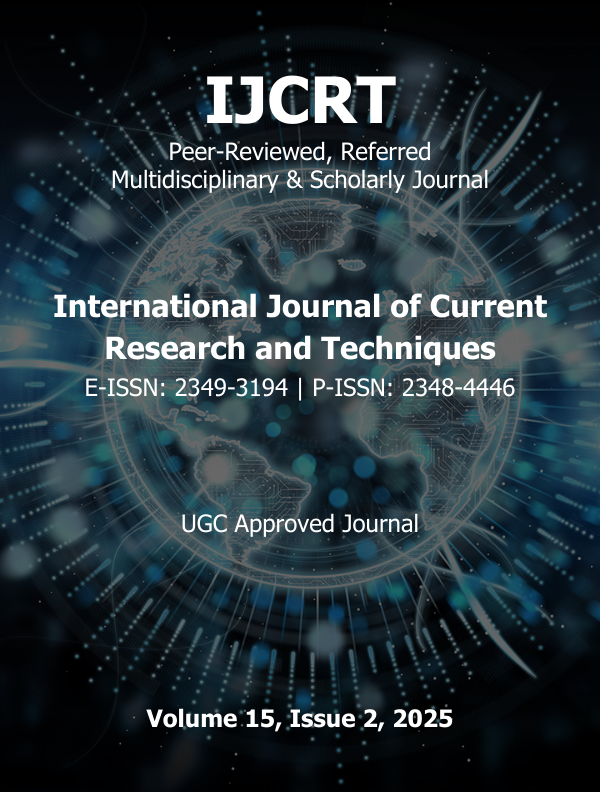Effect of Acapella Versus Active Cycle of Breathing Techniques to Improve Airwayclearance and Exercise Capacity in Subjects with Bronchiectasis
Published 2025-05-26
Keywords
- Bronchiectasis,
- airway clearance,
- exercise capacity,
- 6min-walk distance,
- pulmonary function tests
- active cycle of breathing techniques,
- acapella device ...More
How to Cite
Copyright (c) 2025 IJCRT Research Journal | UGC Approved and UGC Care Journal | Scopus Indexed Journal Norms

This work is licensed under a Creative Commons Attribution 4.0 International License.
Abstract
Bronchiectasis is a chronic condition characterized by persistent cough and sputum production due to permanent thickening and dilation of the bronchial walls, resulting in impaired mucus clearance. This study aimed to compare the effectiveness of two physiotherapy techniques, Acapella device training and Active Cycle of Breathing Techniques (ACBT), in improving pulmonary function and exercise capacity. A quasi-experimental study was conducted with 64 participants with a mean age of 45 years, all clinically diagnosed with bronchiectasis. The participants were randomly assigned to two groups of 32 each. One group received Acapella device training, and the other group received ACBT. Both interventions were administered three times per week for six weeks. Outcome measures included pulmonary function tests and the six-minute walk distance. The results showed significant improvements within both groups, while between-group comparisons revealed that the Acapella group achieved greater improvements in both parameters. These findings indicate that although both techniques are effective, the Acapella device provides superior benefits in enhancing airway clearance and exercise capacity in individuals with bronchiectasis.

